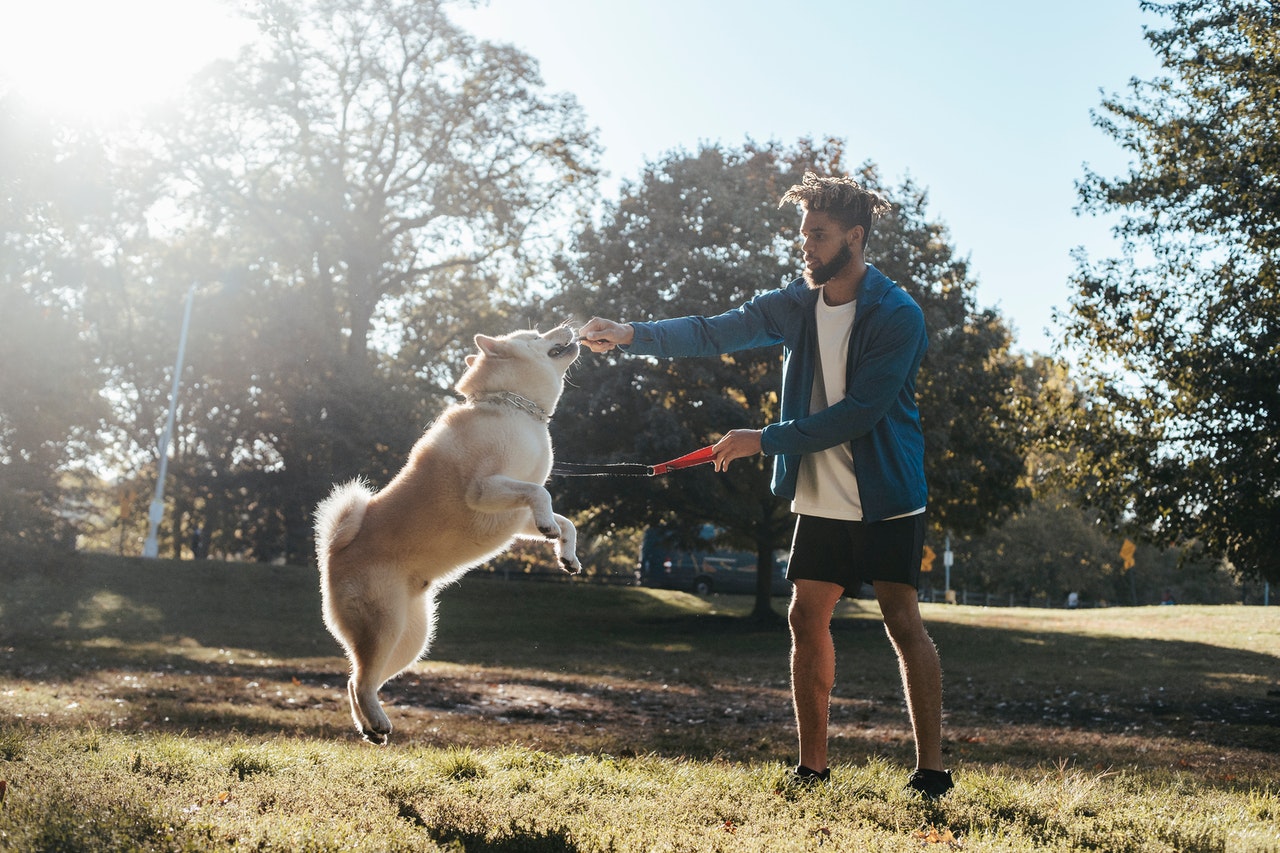Last Updated on February 12, 2023
Owning a dog does not only imply that you have a life companion, but also a responsibility to care for another life. A lot of people are reluctant when it comes to caring for their dogs, and the outcome is often a disaster.
 Some caring parents, however, wish they could communicate with their dogs like they do with family and friends. While you can see some of the doggie emotions through their actions, getting a clear picture of what your dogs are going through can sometimes be challenging.
Some caring parents, however, wish they could communicate with their dogs like they do with family and friends. While you can see some of the doggie emotions through their actions, getting a clear picture of what your dogs are going through can sometimes be challenging.
Many times dogs suffer in silence, unable to tell us where they are hurting. As a parent, you may try to take care of your lovely pet, but it can be difficult because they can’t tell you where they are ailing.
Just like kids, dogs can get sick. You should, therefore, know the diseases that your pet is prone to, the symptoms to watch out for, and how to protect your dog from these diseases.
In this article, we’ll highlight some serious but preventable dog diseases. This will help you in understanding the diseases and their associated symptoms in dogs so you can take the necessary steps.
1. Gastric Torsion
Have you noticed your dog yelping immediately after eating? Then there is a chance he is suffering from excessive bloating.
Just like us, your dog’s stomach may bloat after eating too quickly. But it is always worse in dogs than what we experience. Your dog will have bloat when the stomach enlarges and turns. When the stomach turns, it blocks the air and fluid from escaping and so your dog is unable to vomit or burp.
Symptoms of bloating include restlessness, enlarged belly, straining and inability to vomit, and excessive salivating.
Dogs of all ages are affected by bloating but some breeds are more susceptible to this condition. They include large breeds such as German shepherds, bloodhounds, Great Danes, and Weimaraners. Smaller and mid-size breeds aren’t affected much.
To avoid bloating, ensure your dog eats slowly. You can achieve this by putting the dog’s food in toys so that he’ll dig around for food. Special spiral bowls are also available in the market to prevent dogs from eating their food too fast.
2. Lyme Disease
Lyme is a tick-borne disease and is highly preventable. Your dog will get this disease if they have been exposed to deer ticks, who are common carriers of the disease. It is the most common illness related to ticks.
The first symptom you’ll notice when your dog is affected by this disease is limb lameness that moves from leg to leg after some time. Your dog can also experience a decrease in appetite and stiffness.
If left untreated, Lyme disease can cause kidney problems and even failure. Your vet will treat your dog using antibiotics, and the symptoms usually resolve after four weeks. It is crucial to ensure that you keep your dog from tick-prone areas.
However, the surest way to protect your dog from Lyme disease, as well as other tick-borne diseases, is using tick preventive medicines.
You can also ask your vet to give you topical medicine to put in your pet’s fur to help kill and repels ticks. Spot-on tick preventives usually work really well in preventing tick infestations.
3. Canine Parvovirus (Parvo)
Parvo is a highly contagious disease. Your dog can be infected by parvo after coming into contact with the faeces of an infected dog. The worst thing is that parvo spreads very quickly and can be dangerous if it gets to your dog’s internal organs. Symptoms to look out for include lethargy, diarrhoea, vomiting, fever, weight loss, and dehydration. Your vet will use electrolytes and plenty of fluids to treat your dog. But the most effective way to prevent parvovirus in your dog is to get him vaccinated and ensuring they stay away from faeces.
Indeed, the Canine Parvovirus is a highly contagious viral illness that affects dogs. It attacks the intestinal tract, causing vomiting, diarrhea, and dehydration. In severe cases, it can also attack the heart muscles of young puppies and lead to death. CPV is most commonly spread through contact with infected feces, contaminated surfaces, or through direct contact with an infected dog.
Prevention is key with CPV, and the best way to protect your pet is by getting them vaccinated. Puppies should receive their first round of vaccinations at 6-8 weeks of age, with boosters given every 3-4 weeks until they are at least 16 weeks old. After that, dogs should receive an annual booster shot to maintain immunity.
4. Heartworm
Heartworms are parasites that attack the dog’s heart, blood vessels, and lungs. Heartworms are spread by mosquitoes and are common in many states, even those with a dry climate.
A dog infected by heartworms will show symptoms such as coughing, lethargy, respiratory problems, and weight loss. The condition is treated using antibiotics, a regimen of steroids and organic arsenic injection. The best and cheapest way to protect your dog from contracting heartworm disease is by using regular preventive pills and conducting regular blood tests. Over the counter heartworm preventives are highly effective in preventing heartworms.
Conclusion
In conclusion, as pet owners, it is our responsibility to be informed about the common health issues that our furry friends may face and how to prevent them. By being proactive and taking the necessary steps to protect our pets, we can ensure they lead happy, healthy lives.
 Dog N Treats All dogs deserve to be pampered
Dog N Treats All dogs deserve to be pampered



